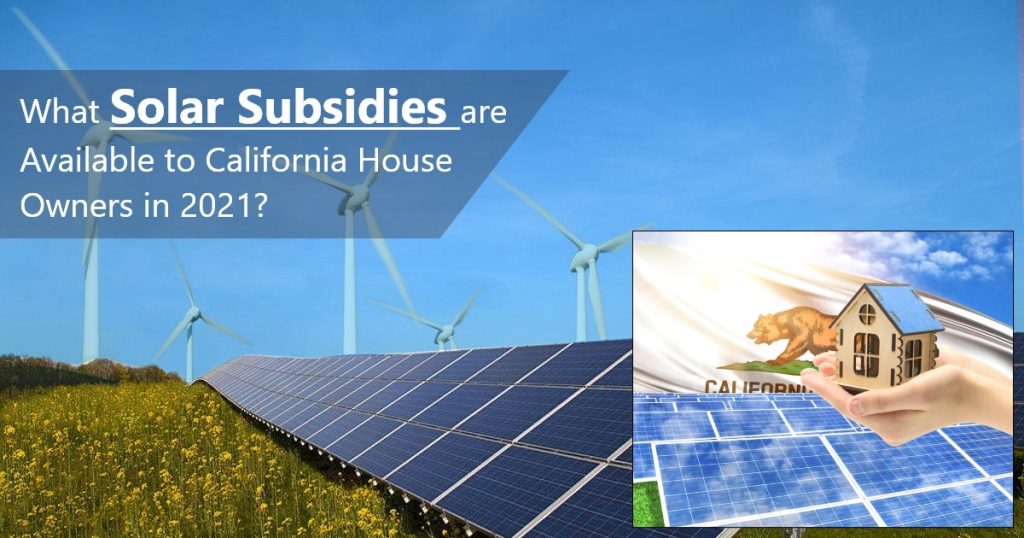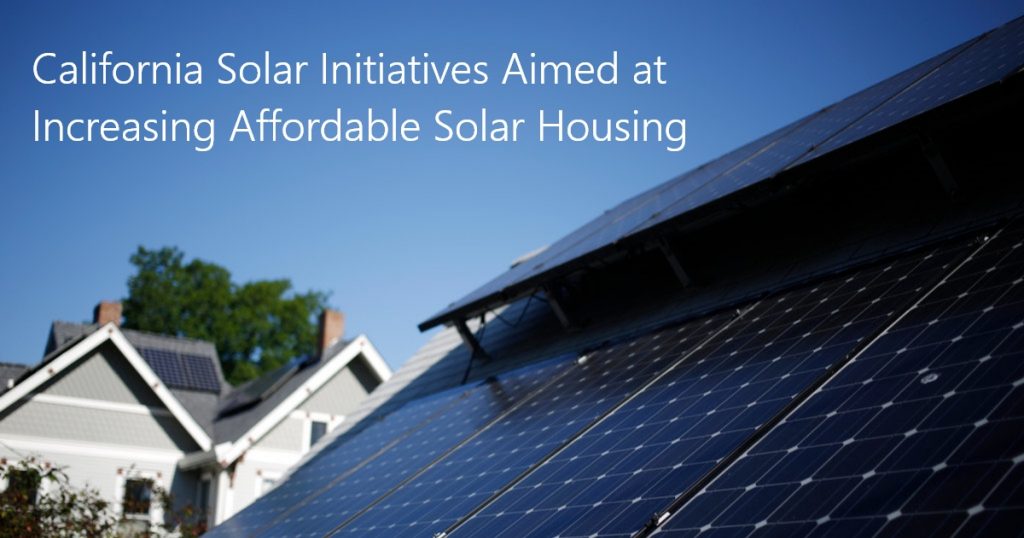What Solar Subsidies are Available to California House Owners in 2021?

If you live in California, you already know that the abundant sunshine available throughout the year makes it an ideal climate for solar power. One of the many reasons to go solar in California is the availability of some of the best solar rebates and Solar incentives in California. Learn why solar is a sound financial decision in California.
Why Does California Need Rebates and Incentives?
If you own Real Estate in California and want to go solar, you’re in luck. In California, Solar subsidies for home and business owners can choose from a variety of incentives to install solar power. California’s robust renewable portfolio standard (RPS), which requires all utilities in the state to source 50% of their electric generation from renewable resources by 2030, is a major driver of the state’s incentives. In California, utilities, the state, counties, and even some municipalities offer incentives.
Residential power-purchase agreements or leases, which allow third parties to own the system and give the home or building owner a fixed price for the system or the electricity it produces over the contract’s lifetime, which can range from 10 to 25 years, are a popular option in California. Essentially, the Golden State has something to offer almost everyone. Get excellent solar installation companies in Fresno city, California.
The cost of your PV system (and the amount of money you’ll save on your utility bill) is determined by several factors. The size of your PV system, which installer you choose, registered solar incentives, which utility services your region and their electricity rate structure, and how much electricity you use are just a few of the factors
How Much is the California Solar Tax Credit, & Solar Incentives California 2021?

Solar panels installed by homeowners in California will be eligible for a 26 percent tax credit.
There is a critical distinction to be made here: there is no solar tax credit unique to California. When people talk about the ‘California solar tax credit,’ they’re talking about the federal solar tax credit, and Solar Subsidies in California 2021, which is available to all American homes.
Until the end of 2022, the federal solar tax credit is 26% of the cost of a system, then it drops to 22% in 2023. The federal solar investment tax credit (also known as the ITC or Investment Tax Credit) will expire in 2024 unless new federal legislation is introduced.
California Tax-Based Solar Incentives
Net metering incentive in California
Investor-owned utilities are required to buy excess solar electricity from homeowners at close-to-retail rates under California’s net energy metering incentive.
NEM 2.0, which was passed in 2018 by the Public Services Commission, guarantees homeowners to sell over 20 years of surplus solar power, typically produced during midday
This is a very valuable incentive: the easiest way to pay for your purchase of solar panels is to sell energy to the power station at a good price.
The Investment Tax Credit (ITC)
Although not a particular solar subsidies (tax incentive) in California, the federal ITC provides a major additional saving for solar plants. Every homeowner who purchases their PV systems can claim and deduct from their federal tax (tax liability) this year 26 percent of their solar installation costs.
Property-Assessed Clean Energy (PACE)
PACE—A loan option that allows property owners to finance their qualified solar energy and power-efficiency projects through property taxes is known as the Home Energy Renovation Opportunity (HERO). Local or state governments, working with traditional financiers, finance the upfront project costs and homeowners repay their local authorities, usually over 20 years, with an increased property tax bill
California Solar Initiatives Aimed at Increasing Affordable Solar Housing

SASH Program (Single-Family Affordable Solar Homes)
For eligible low-income individual-family homes, the SASH program can cover most or all the costs of upstream commercial solar installation.
To qualify for the SASH program, a homeowner must:
- Be a Pacific Gas & Electric customer, be it Southern California Edison or San Diego Gas & Electric Own, live in your home
- Have an 80% lower household income than the medium area
- live in a house considered by the California Public Service code as “accessible housing”
An early incentive of $3 per watt of installed solar will be granted to qualifiers for the SASH program. If a qualifying host installs a system of six kilowatts, he will receive an US$18,000 incentive. The incentive amount received shall not exceed the total solar system costs.
The program is run by Grid Alternatives, a not-for-profit organization. By January 2021, the program had installed almost 9,400 solar panel systems.
MASH Program (Multi-family Affordable Solar Homes)
The MASH program is designed to rehabilitate low-cost, solar-based homes. In order to qualify, one of the following must fund a multi-family residential building:
- Tax credits for low-income housing
- Hypothecary bonds exempt from taxes.
- Bonds for general bonds
- Some type of grants and loans from the local, State or Federal
The housing complex can also be qualified by selling or renting at least 20 percent of the total units to residents of lower-income. The MASH program manual lists additional qualifications.
Conclusion –
If you live in California, and if you’re considering solar panel installation for your house, business, etc. you are lucky. California offers these above-mentioned solar subsidies, Tax-Based Solar Incentives which surely the best one can get.
Don’t wait up, go solar!
Do You Need a Home Roof Replacement for Solar Panels? – 5 Commonly Asked Questions.
June 25, 2021 at 11:15 am[…] >>>Also Read: – What Solar Subsidies are Available to California House Owners in 2021?<<< […]
How Much Rooftop Area is Required to Install Solar Panels?
July 7, 2021 at 11:03 am[…] >>>Also Read: – What Solar Subsidies are Available to California House Owners in 2021?<<< […]
Does Solar Power Really Save Your Electricity Bill?
July 13, 2021 at 12:01 pm[…] Also Read: – What Solar Subsidies are Available to California House Owners in 2021? […]
7 Top Reasons to Install Photovoltaics in Industrial Areas
August 2, 2021 at 4:23 am[…] Also Read: – What Solar Subsidies are Available to California House Owners in 2021? […]